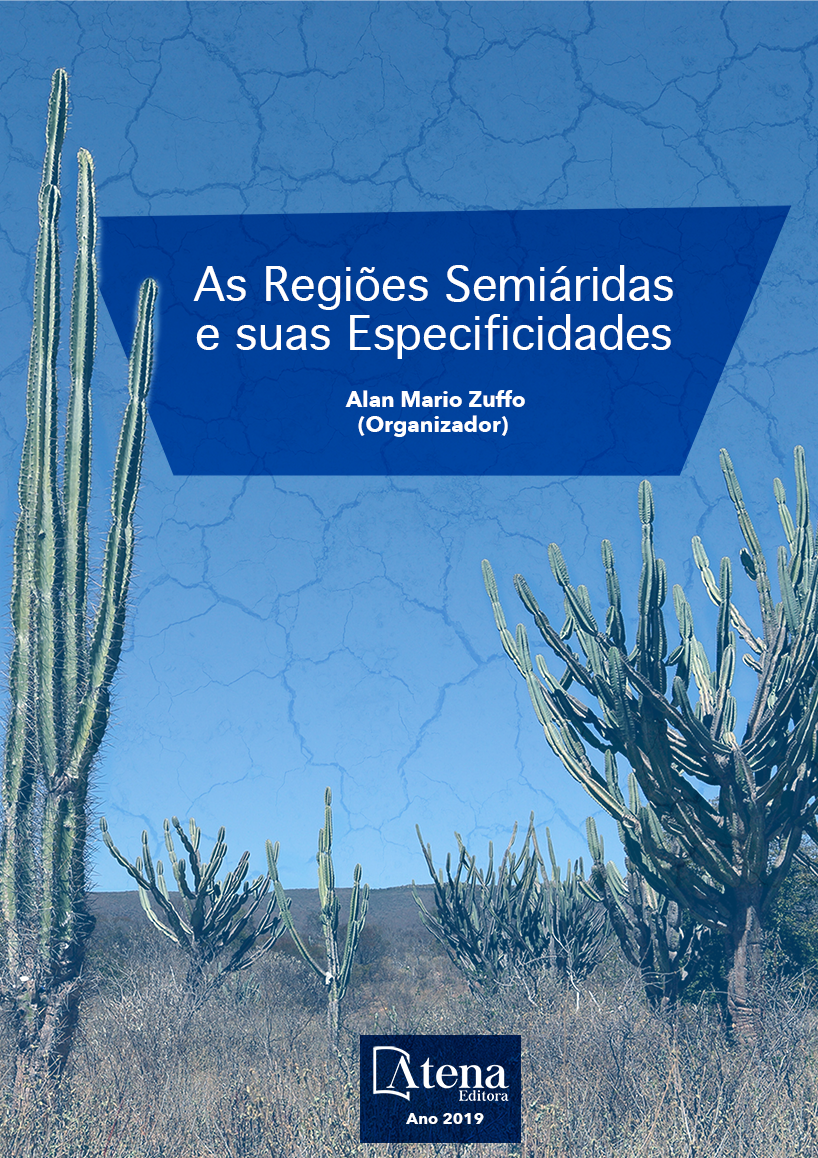
POTENCIAL ANTIMICROBIANO DO ÓLEO ESSENCIAL DE ALGRIZEA MINOR FRENTE A STAPHYLOCOCCUS AUREUS
Óleos essenciais são misturas
complexas de compostos voláteis lipofílicos,
provenientes do metabolismo secundário
das plantas. Algrizea minor, popularmente
conhecida por murta, é utilizada na medicina
tradicional para tratamento de doenças do trato
respiratório e urinário. Objetivou-se avaliar
a atividade antimicrobiana do óleo essencial
das folhas de Algrizea minor frente a cepas
Staphylococcus aureus. A extração do óleo foi
realizada por hidrodestilação em um aparelho
de Clevenger, e a atividade antimicrobiana
determinada pelo método de microdiluição em
caldo, sendo testadas cepas de referência e
multirresistentes. Os resultados mostraram-se
satisfatórios, tendo sido de 0,198% o rendimento
do óleo essencial em relação à massa vegetal.
Foi considerado para análise o CIM, ou seja,
a concentração necessária do óleo essencial
capaz de inibir 50% do crescimento bacteriano
no período de 24 horas. No ensaio de
microdiluição em caldo, foi possível determinar a
Concentração Inibitória Mínima e Concentração
Bactericida Mínima, sendo para S. aureus ATCC
CIM:15,63 µg/ml e CBM: 62,52 µg/ml; S. aureus
(UFPEDA 731) CIM:31,25 µg/ml e CBM:125 µg/
ml; S. aureus (UFPEDA 733) CIM:62,5 µg/ml
e CBM: 250 µg/ml. Os resultados mostraram
que o óleo foi especialmente eficaz contra
as bactérias gram-positivas, apresentando
atividade bacteriostática. Uma análise detalhada
dos compostos voláteis encontrados no óleo
essencial de Algrizea minor pode revelar quais
os compostos majoritários são responsáveis
por essa ação bacteriostática. Dessa forma,
o óleo essencial de Algrizea minor poderá ser
uma nova fonte de antimicrobiano bioativo para
o tratamento de infecções de pele causada por
S.aureus.
POTENCIAL ANTIMICROBIANO DO ÓLEO ESSENCIAL DE ALGRIZEA MINOR FRENTE A STAPHYLOCOCCUS AUREUS
-
DOI: 10.22533/at.ed.92319150314
-
Palavras-chave: Antimicrobiano. Resistência bacteriana. Produtos naturais. Caatinga
-
Keywords: Antimicrobial. Bacterial resistance. Natural products. Caatinga.
-
Abstract:
Essential oils are complex mixtures of volatile lipophilic compounds,
derived from the secondary metabolism of plants. Algrizea minor, popularly known as
myrtle, is used in traditional medicine for treatment of diseases of the respiratory and
urinary tract. The objective was to evaluate the antimicrobial activity of the essential oil
of leaves of Algrizea minor against Staphylococcus aureus strains. The extraction of the
oil was carried out by hydrodistillation in a Clevenger apparatus, and the antimicrobial
activity determined by the microdilution method in broth, being tested reference and
multiresistant strains. The results were satisfactory, with the yield of 0.198% of the yield
of the essential oil in relation to the vegetable mass. The MIC, that is, the necessary
concentration of the essential oil capable of inhibiting 50% of the bacterial growth in the
period of 24 hours was considered for analysis. In the broth microdilution assay, it was
possible to determine the Minimum Inhibitory Concentration and Minimum Bactericidal
Concentration, for S. aureus ATCC MIC: 15.63 μg / ml and CBM: 62.52 μg / ml; S. aureus
(UFPEDA 731) MIC: 31.25 μg / ml and MBC: 125 μg / ml; S. aureus (UFPEDA 733)
MIC: 62.5 μg / ml and MBC: 250 μg / ml. The results showed that the oil was especially
effective against gram-positive bacteria, presenting bacteriostatic activity. A detailed
analysis of the volatile compounds found in the essential oil of Algrizea minor may
reveal which major compounds are responsible for this bacteriostatic action. Therefore,
the essential oil of Algrizea minor may be a new source of bioactive antimicrobial for the
treatment of skin infections caused by S. aureus. -
Número de páginas: 15
- Alexandre Gomes da Silva
- Luciclaudio Cassimiro de Amorim
- Marcia Vanusa da Silva
- Paloma Maria da Silva
- Maria Tereza dos Santos Correia
- Graziela Claudia da Silva


